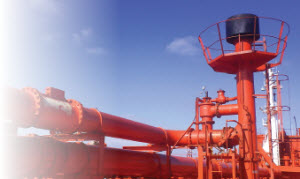- Home
- Products
- Maritime Industry
- Vimex
- NMVOC Emission Measurements
- Emission Monitoring System for NMVOC
Emission Monitoring System for NMVOC
VIMEX
- General Details
- Documents
During loading, storage and transportation of crude oil, volatile organic compounds (VOC) are emitted to the atmosphere. The non-methane fractions (NMVOC) react with nitrogen oxides, creating a toxic ground level ozone and smog layer. The NMVOC emitted to the atmosphere has environmental effects both as it is a greenhouse gas as well as being directly harmful to human health and vegetation.
Our NMVOC Emission Monitoring System is specially designed to enable ships to report their emissions in accordance with IMO regulations. By continuously monitoring emissions, this will also help the crew improving their best operational practices.
Our system design is based on quantification of the gas volume through the ship’s main riser before sending a sample to our analyser system for further sample treatment. By measuring the flow, pressure, temperature and then analysing the gas composition, we will then generate the most accurate determination of NMVOC emissions possible.

Main units:
- Carbon steel spool piece with gas sample probes and ultrasonic flow monitoring
- Analyser system with sample treatment and a compact, fieldmounted gas chromatograph in
an SS316L stainless steel cabinet - Calculation unit for data processing and communication
- Industrial computer for remote operation and maintenance
Technical specifications, spool piece:
- Material: Carbon steel
- Total length including flanges: 1500 mm
- Wall thickness: 9.5 mm
- Ship owner to specify flange standard
- Mechanical connections downstream for transmitters, gas sample and by-pass sample
return, gas chromatograph flange: ½” NPTF socket - Mounting bracket for junction box
Technical specifications, transmitters:
- Pressure measuring range: 0 to 2 barA
- Flow measuring range: 0 to 16000 m3/h
- Temperature measuring range: 0 to 40 °C
Gas components measuring range vol %:
- Nitrogen and oxygen [0 to 100]
- Carbon dioxide [0 to 15]
- Methane [0 to 20]
- Ethane [0 to 20]
- Propane [0 to 30]
- Isobutane [0 to 30]
- n-Butane [0 to 30]
- Isopentane [0 to 10]
- n-Pentane [0 to 10]
- Hexane+ [0 to 5] (including hydrocarbons up to C9)

